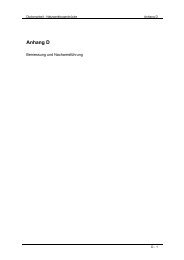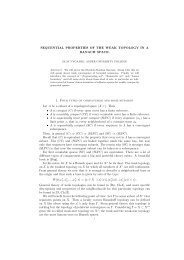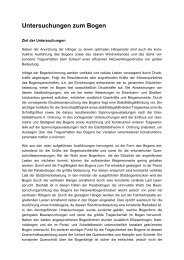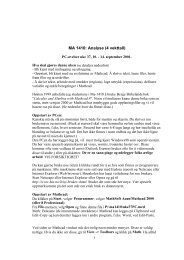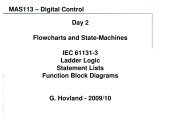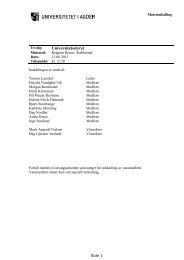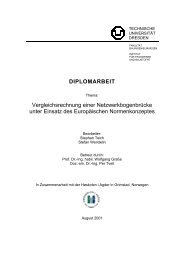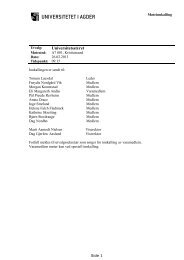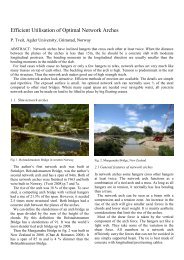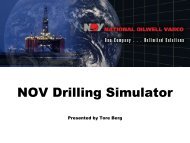Reference Architecture for Remote Operations of Offshore Wind Farms
Reference Architecture for Remote Operations of Offshore Wind Farms
Reference Architecture for Remote Operations of Offshore Wind Farms
- No tags were found...
You also want an ePaper? Increase the reach of your titles
YUMPU automatically turns print PDFs into web optimized ePapers that Google loves.
usiness processes orchestration and automation, in<strong>for</strong>mation services in order to manage diverse dataand content in a unified manner and also partner services <strong>for</strong> trading partners.3.3 Services patternThe services pattern provides <strong>for</strong> mechanisms to reuse existing applications when introducing new ones,and to ensure that new applications also are reusable. For example, a condition monitoring applicationmust be able to integrate with existing vibration monitoring services. In order to enable reusability <strong>of</strong> aservice, it is recommended to build a corresponding service component <strong>for</strong> the service. By using serviceorientedarchitecture as a design principle in<strong>for</strong>mation can be available as a service. FIGURE 8 shows anexample <strong>of</strong> integration <strong>of</strong> service layer into a particular application. In this example, all <strong>of</strong>fshore windpartners can access in<strong>for</strong>mation via web-based or <strong>for</strong>ms-based clients.FIGURE 8. Service layer in an ordinary applicationThe service component layer contains s<strong>of</strong>tware components, each <strong>of</strong> which provides the implementationor realization <strong>for</strong> a service, or operation on a service. Service components reflect the definition <strong>of</strong> theservice they represent, both in its functionality and its quality <strong>of</strong> service. The service layer providesconsumers with sufficient detail to invoke the business functions exposed by a provider <strong>of</strong> the service.4. CONCLUSION AND FUTURE WORKFinally, we can answer the question that the reference architecture <strong>for</strong> integrated operations, secondgeneration from OLF, is a good starting point <strong>for</strong> our reference architecture <strong>for</strong> remote operations, but weneed to adapt it corresponding to the <strong>of</strong>fshore wind energy industry. The adaptations have been explainedin section 2 and section 3. This paper shows that the most important task in development <strong>of</strong> remoteoperations <strong>for</strong> <strong>of</strong>fshore wind farms is to construct a semantic model based on the list <strong>of</strong> standardsmentioned in subsection 3.1.Page 1058



